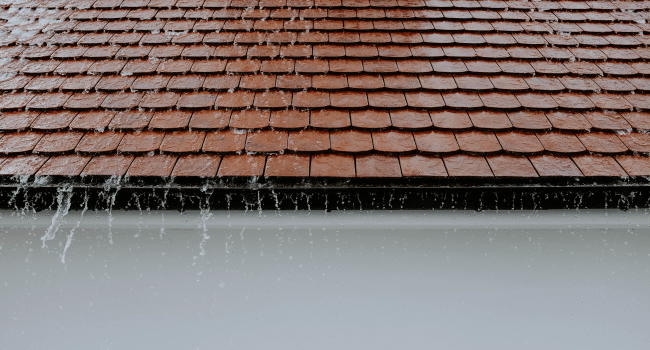Table of Contents
Your roof is your home’s first line of defense against the elements, and understanding how different weather conditions impact its performance is essential for long-term durability. Ridge Runner Roofing emphasizes seasonal roof readiness as a crucial part of home maintenance. From the scorching summer sun to heavy winter snow, every season presents unique challenges that can compromise your roof’s integrity if not properly addressed.
Homeowners often overlook the cumulative impact of weather on their roofs. A sudden storm might cause immediate damage, but even everyday exposure to sun, wind, rain, and temperature shifts can degrade materials over time. That’s why regular inspections and preventive maintenance are key to avoiding unexpected repairs and preserving your roof’s lifespan.
Preparing your roof for seasonal extremes is not only about protection—it’s also about performance. A well-maintained roof enhances energy efficiency, improves indoor comfort, and helps prevent costly interior damage. Partnering with a trusted provider like Ridge Runner Roofing ensures your home is ready to face the elements year-round.
Spring: Recovery and Inspection
Assessing Winter Damage
Spring is the perfect time to inspect your roof for damage caused by ice, snow, and fluctuating temperatures. Look for:
- Missing or lifted shingles
- Cracked flashing or sealant
- Signs of moisture or leaks in the attic
These issues, if left unaddressed, can worsen with spring rains.
Clearing Debris
Winter storms often leave behind branches, leaves, and other debris that can clog gutters and downspouts. Clearing these areas ensures proper water drainage, which helps prevent water pooling and foundation problems.
Planning Preventive Repairs
Spring is also a good time to schedule minor repairs before they escalate into major problems. Ridge Runner Roofing offers thorough inspections and timely service to keep your roof in peak condition.
Summer: Sun and Heat Stress
UV Radiation and Material Breakdown
Constant exposure to ultraviolet (UV) rays can degrade roofing materials, particularly asphalt shingles. Over time, this causes shingles to become brittle and lose their granules, which are essential for UV protection.
Thermal Expansion and Contraction
Extreme heat causes roofing materials to expand, while cooler nights cause them to contract. This daily movement can lead to cracks, warping, or loosening of shingles and flashing components.
Proper Ventilation
A hot attic without adequate ventilation can lead to higher indoor temperatures, increased energy bills, and premature aging of roofing materials. Ridge Runner Roofing ensures your ventilation system is optimized to reduce summer heat buildup.
Fall: Preparation for Winter
Gutter Maintenance
Clearing leaves and debris from gutters and downspouts in the fall is essential. Clogged gutters can lead to water overflow and ice dams, both of which can damage the roof and siding.
Inspecting Flashing and Seals
Fall is the time to ensure all flashing around chimneys, vents, and skylights is intact. Any cracks or gaps can allow water to seep in during winter freezes and thaws.
Scheduling a Professional Inspection
A pre-winter inspection helps identify any vulnerabilities before snow and ice arrive. Ridge Runner Roofing provides detailed evaluations and maintenance plans tailored to your roof’s condition.
Winter: Snow, Ice, and Freeze-Thaw Cycles
Ice Dams
When warm air in the attic melts snow on the roof, it can refreeze at the edges, forming ice dams. These prevent proper drainage and can cause water to back up under the shingles and into the home.
Snow Load
Heavy snow accumulation adds significant weight to the roof, which can stress the structure, especially in older homes. Removing excess snow safely is important to avoid damage or collapse.
Freeze-Thaw Damage
Water that enters small cracks or under loose shingles can freeze and expand, worsening the damage. Proper insulation and ventilation reduce this risk by maintaining a consistent attic temperature.
Ridge Runner Roofing is equipped to respond quickly to winter emergencies and offers maintenance services that reduce the risk of weather-related issues during the coldest months.
Year-Round Maintenance Tips
Regular Inspections
Ideally, your roof should be professionally inspected twice a year—once in the spring and once in the fall. These checkups help catch minor issues before they become costly problems.
Trim Surrounding Trees
Branches that overhang your roof can cause damage during storms or heavy winds. Trimming these branches also helps reduce debris buildup.
Monitor Attic Conditions
A properly ventilated and insulated attic can extend your roof’s lifespan and improve home energy efficiency. Keep an eye out for signs of moisture or pest activity.
Keep an Eye on Interior Ceilings
Water stains or peeling paint on upper-level ceilings may indicate a leak. Addressing the source quickly can prevent structural and cosmetic damage inside the home.
The Value of Professional Expertise
Accurate Diagnostics
Professional roofers can identify subtle issues that homeowners might overlook, such as early signs of granule loss or flashing wear.
Safe and Efficient Repairs
Roof work can be dangerous, especially during or after severe weather. Trained professionals like Ridge Runner Roofing have the tools and experience to work safely and effectively.
Long-Term Cost Savings
Preventive maintenance and timely repairs are far more cost-effective than major overhauls. A well-maintained roof also contributes to better home resale value and lower insurance premiums.
Conclusion
Your roof is constantly exposed to changing weather, and each season brings unique threats that can wear down its structure over time. Regular maintenance and seasonal preparation are essential for keeping your roof in top condition and avoiding unexpected damage. Ridge Runner Roofing is committed to helping homeowners weatherproof their homes with expert inspections, maintenance, and repairs tailored to each season. With their support, your roof can stand strong and perform efficiently no matter what the forecast holds.
